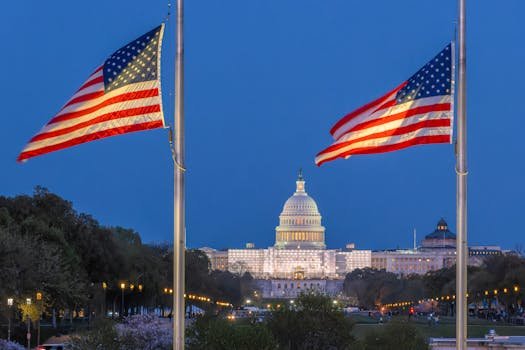Love is a universal force, a thread that weaves through the fabric of human existence. In America, a nation built on ideals of freedom and individual pursuit, love takes on a unique character—wild, diverse, and deeply influential. From the personal to the political, the way Americans experience and express love has profound social impacts, rippling outward to shape the policies, priorities, and even the health of the U.S. government. This blog explores how romance, relationships, and the societal structures surrounding them intersect with governance, affecting everything from healthcare to economic stability to legislative agendas.
# The Cultural Landscape of Love in America
America’s approach to love is as varied as its people. The nation celebrates romantic individualism—think of Hollywood’s grand gestures or the quintessential American dream of finding “the one.” Yet, love here is also pragmatic, shaped by a culture of independence and ambition. Dating apps like Tinder and Bumble have turned romance into a marketplace, while marriage remains both a personal milestone and a legal institution with significant societal weight.
This duality—love as both an emotional ideal and a practical arrangement—sets the stage for its broader impacts. According to the U.S. Census Bureau, about 50% of American adults were married in 2023, a decline from 72% in 1960. Meanwhile, cohabitation, single-parent households, and divorce rates reflect shifting norms. These changes don’t just alter family life; they influence how the government responds to its citizens’ needs.
Love, in its many forms, also affects public health—a key concern for any government. Studies from the American Psychological Association show that strong relationships correlate with better mental and physical health, reducing stress and chronic illness. Conversely, loneliness, which affects over 30% of Americans per recent surveys, is linked to higher rates of depression and healthcare costs. The government, tasked with managing public welfare, must grapple with these trends, making love not just a private matter but a public policy issue.
Romance isn’t cheap, and in America, it’s a multi-billion-dollar industry. The wedding sector alone was valued at over $50 billion in 2024, according to market research firms, while dating services rake in billions more. Valentine’s Day spending—flowers, chocolates, dinners—adds another $20 billion annually. This economic activity fuels jobs, tax revenue, and consumer confidence, all of which bolster the government’s fiscal health.
But love’s economic impact goes deeper. Marriage, for instance, is a financial partnership with legal implications. Tax codes favor married couples through joint filing benefits, while divorce proceedings clog courts and redistribute wealth. The rise of dual-income households has shifted labor markets, with women’s workforce participation climbing to 57% in 2023, per the Bureau of Labor Statistics. This shift influences government policies on childcare, parental leave, and wage equality—issues that have climbed the legislative ladder in recent years.
On the flip side, the breakdown of relationships carries costs. Divorce and single parenthood often strain social safety nets like welfare, food assistance, and housing programs. The National Institute of Health estimates that family instability contributes to higher poverty rates, which in turn pressure government budgets. Love, then, is a silent driver of economic policy, shaping how resources are allocated and who gets support.
# Love, Health, and the Government’s Role
If love impacts health, and health impacts governance, then the U.S. government has a vested interest in the romantic lives of its citizens. Consider healthcare: married individuals tend to live longer and use fewer medical resources, according to the CDC. Stable relationships act as a buffer against stress-related illnesses like heart disease, which costs the U.S. over $200 billion yearly. By contrast, the rise in loneliness—exacerbated by social media and urban isolation—has been called a public health crisis by the Surgeon General.
This puts pressure on lawmakers. Mental health funding, for instance, has surged in recent budgets, with the 2024 federal allocation reaching $4.25 billion—a nod to the growing recognition of social isolation’s toll. Programs like Medicaid and Medicare must adapt to an aging population, many of whom rely on partners for caregiving, reducing the burden on public systems. When love falters, the government often steps in, whether through subsidized therapy or eldercare.
Romantic relationships also intersect with reproductive health, a perennial hot-button issue. Love leads to families, and family planning—birth control, abortion, IVF—remains a battleground in American politics. The 2022 Dobbs decision overturning Roe v. Wade shifted abortion regulation to the states, reflecting how deeply personal choices about love and partnership can sway government structures. These debates shape elections, judicial appointments, and federal funding, proving that love’s consequences are anything but apolitical.
# The Politics of Love
Speaking of politics, love has long been a lever in American governance. Marriage equality, legalized nationwide in 2015 with Obergefell v. Hodges, was a triumph of love over tradition, reshaping civil rights and family law. It also galvanized political movements, from progressive activism to conservative backlash. Today, issues like transgender rights and polyamory challenge the government to redefine legal recognition of relationships, testing the boundaries of liberty and equality.
Love influences voting behavior too. Married couples, especially those with children, tend to lean conservative, favoring policies on tax breaks and education, per Pew Research data. Single adults, particularly younger ones, skew liberal, pushing for social programs and climate action. These divides play out in Congress, where family-oriented legislation—like the Child Tax Credit expansion in 2021—reflects the electorate’s romantic and familial priorities.
Then there’s the spectacle of love in leadership. Politicians’ personal lives—marriages, affairs, divorces—become public fodder, affecting their credibility. Bill Clinton’s scandal in the 1990s nearly derailed his presidency, while figures like Barack and Michelle Obama leveraged their partnership as a symbol of stability. Love, or its absence, humanizes leaders and sways public perception, indirectly steering government direction.
# Social Media, Love, and Governance
In 2025, love in America is inseparable from technology. Social media platforms like Instagram and X amplify romantic narratives, from viral proposals to breakup threads. Dating apps have normalized rapid-fire courtship, but they’ve also sparked debates about privacy and data security—issues the government must regulate. The Federal Trade Commission has cracked down on romance scams, which cost Americans $1.3 billion in 2023 alone, showing how love’s digital frontier demands oversight.
Online culture also shapes social attitudes that ripple into policy. The #MeToo movement, born on social platforms, transformed workplace laws and sexual harassment protections. Meanwhile, influencers peddling relationship advice—sometimes dubious—fuel discussions about mental health and gender roles, pressuring lawmakers to address these evolving norms. Love in the digital age is a public performance, and the government must keep pace with its consequences.
# The Strain of Inequality on Love and Government
Not all love stories are equal in America, and inequality casts a long shadow. Economic disparity affects who can afford to marry, with low-income couples less likely to tie the knot due to financial instability, per the Brookings Institution. Racial divides persist too: Black Americans face higher rates of single parenthood and lower marriage rates, often tied to systemic barriers like incarceration and job loss. These gaps strain social programs and fuel debates over welfare reform.
Gender dynamics add another layer. The rise of women’s independence has upended traditional roles, challenging government to support shifting family structures. Paid family leave, still absent federally in 2025, lags behind other nations, reflecting a reluctance to fully adapt to modern love’s demands. Inequality in romance thus becomes a governance issue, as the state navigates who gets left behind and who gets lifted up.
# Love as a National Identity
America’s founding mythos—liberty, pursuit of happiness—includes the right to love freely. This ideal has driven landmark policies, from interracial marriage (Loving v. Virginia, 1967) to today’s battles over LGBTQ+ rights. Yet, it also exposes tensions: whose love counts, and who gets to define it? The government, as arbiter of law and culture, must balance tradition with progress, a task made harder by a polarized populace.
Love also unites. National crises—like 9/11 or the COVID-19 pandemic—reveal how relationships bolster resilience, reducing the state’s burden. Community networks, often rooted in familial or romantic bonds, step up when government falters, suggesting that love’s social capital is a hidden asset in governance.
# Conclusion: Love’s Lasting Echoes
In America, love is more than a feeling—it’s a force that shapes society and, by extension, the government. It drives economic growth, influences health outcomes, and sways political tides. From tax codes to healthcare budgets to civil rights, the fingerprints of romance are everywhere in the halls of power. As the nation evolves, so too will its love stories, challenging the U.S. government to adapt to new realities—digital, diverse, and deeply human.
On this April 02, 2025, as we reflect on love’s role in America, one truth stands out: it’s not just a personal journey but a collective one, echoing through the policies that govern us all. Love and health, intertwined, remind us that the heart of a nation beats strongest when its people are connected—not just to each other, but to the systems that sustain them.
Love, Health, and America: Pete Hegseth’s Thoughts on Life, Patriotism, and Well-being.




